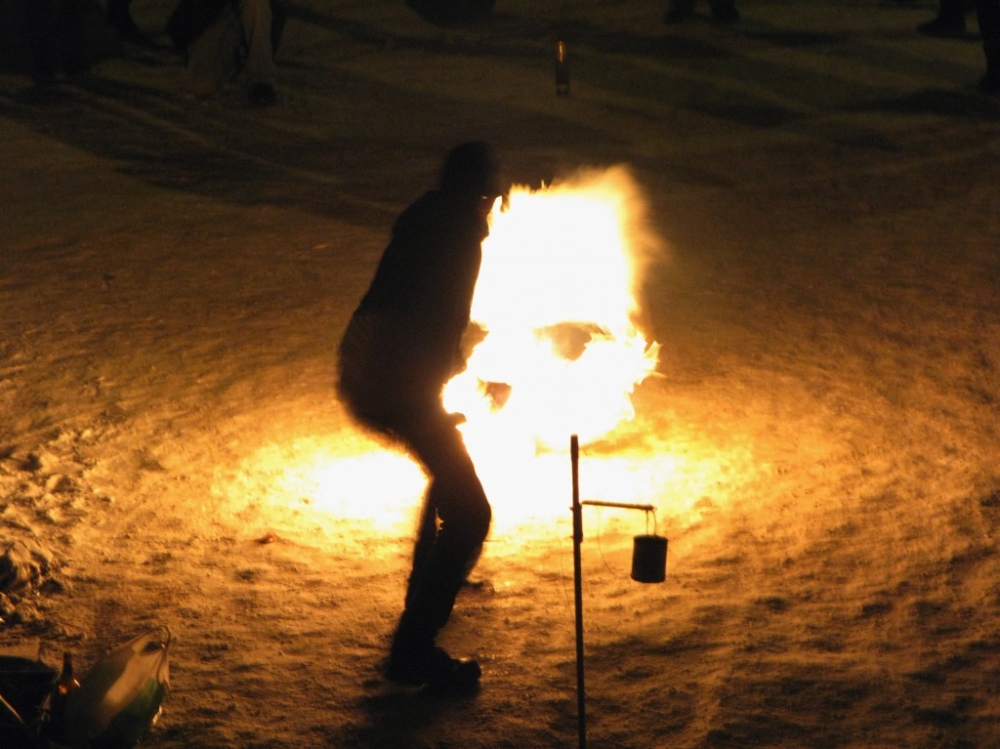
Explosions, photograph by Mari Keski-Korsu
Hijacking the Ptarmigan practice over the first quarter of 2013 is Illegal Aesthetics, an ongoing laboratory executed within the Migrating Art Academies framework www.migaa.eu, purse-snatching for interrogation the very scope of art’s social domain. How far can critique be constrained by the laws and principles of its victim? Must the creative endeavour prepare to abandon the aesthetic in aesthetics, the legal frame of society, the moral absolute in behaviour? Lured by the promise of transgressing a few disciplinary border lines and the literal chance to blow things up, 16th-20th January, I took my law in my hands and attended the movement’s core workshop.
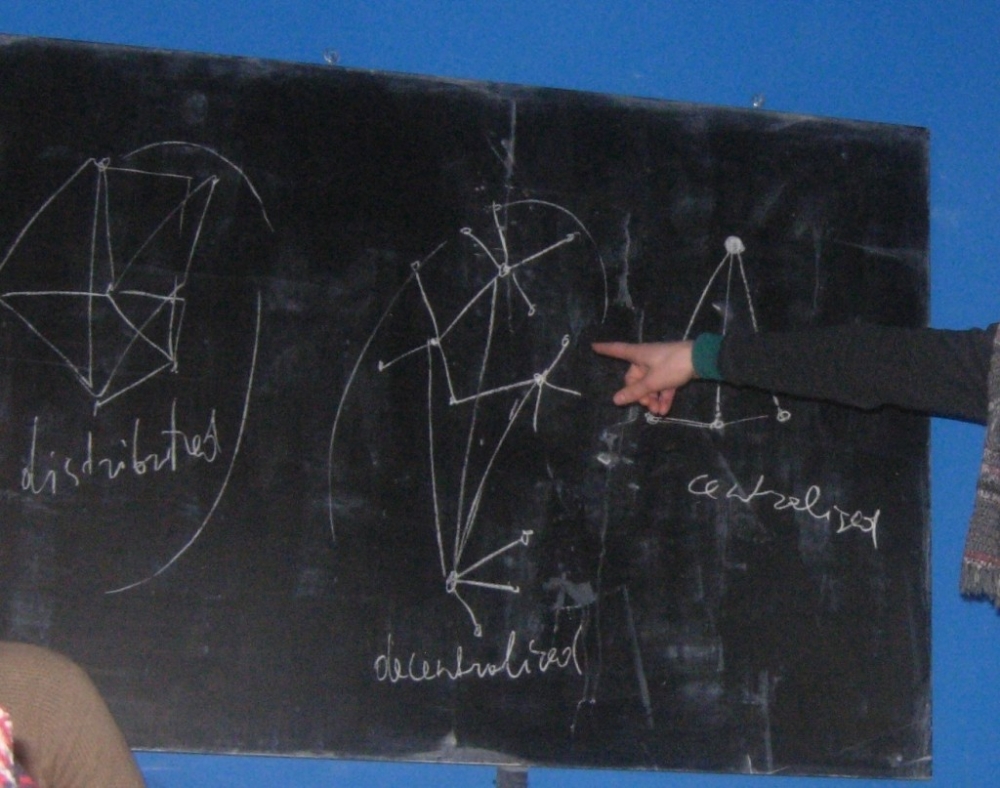
Mindaugus Gapševičius explains the hierarchies of networks.
The terms of contract
The double spine of the workshop runs through both poles of the theme; one embedded in information, the other embodied in physicality. From each extreme, naïve but significant questions emerge:
Lab leader Mindaugas Gapševičius pushes us through the looking lattice of the internet via P2P art, a true 21st century frontier of illegality where identical physical acts — the sequential clicking of buttons and minute finger gestures — equal contraband or acquiescence. It is a distinction dictated by data, the forms necessarily decoded before humanly comprehensible.
Fiona Flynn and Lewis McGuffie’s benign explosions fed by common candle wax, a splash of water and boom un-regulated, forbidden fiery cater-bang, occupy the other end. Between romance and revolution, nothing but degree, scale, and severity — same fuel different thermo-legal context.
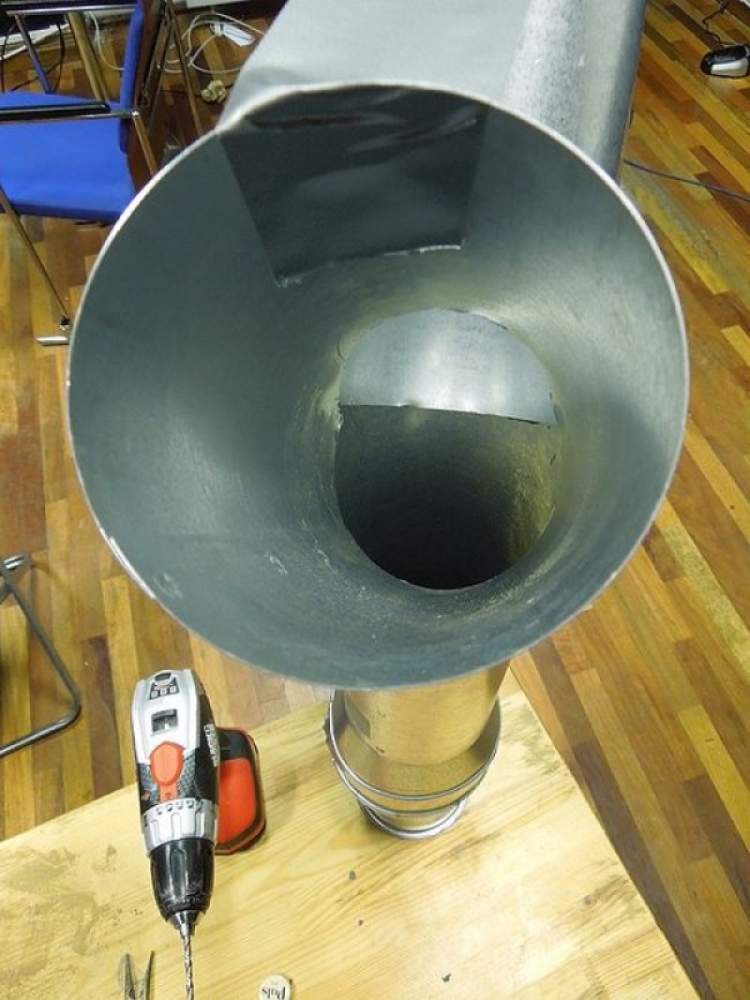
Andrej Vasilenko and Alexandru Raevschi’s dual chimney bomb setting, photograph by Hidemi Nishida
Neither pole operates in abstraction from the other, information illegaleese must supervene upon the physical, change the screen, unplug the wires, click elsewhere and the crime is over. An explosion is only disallowed if outside of code and certification. Staged, with blessing, in the yard of the Polymer creative factory, the workshop is out in the deathly cold, legally and literally. A park away, state sanctioned pyrotechnics surround the city wall, kicking off the city’s annual fire and ice festival. The difference is only minimally physical — a form, a signature, ink marks on paper, scanned bits in a database — the import is in the data, information recorded and (once again) interpreted.
Hierarchical re-arrangements
As Gapševičius virtual tours us through the background, issues and classics of net, P2P and hacker art, it is difficult not to draw parallels with non-art hacking. An earlier project of Gapševičius’ own illustrates the comparison well: http://www.o-o.lt/mi_ga/. Under the convincing guise of a hard-drive defragger, in actual effect eating up system resources (hopefully) and driving the computer to seizure, this faux-software fits a genre of work intended to elicit user response, the questioning of their computer-relationship, through the charged media of frustration and anger. It’s a clever trick and, with its subverted mimicry, a mesmerising aesthetic. The same could be said of a good ol’rickrolling.
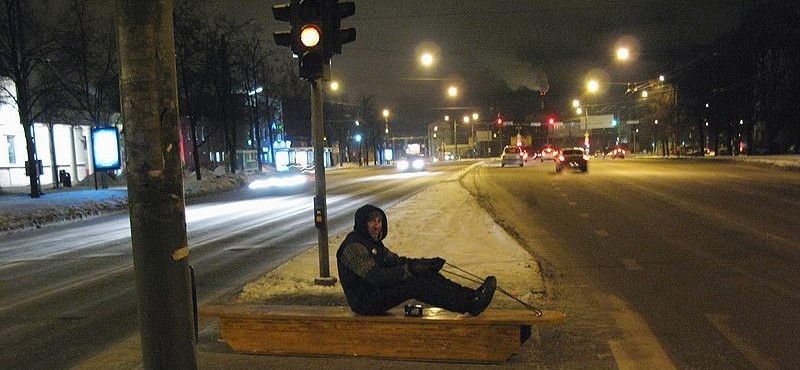
Ernest Truely of Polymer and Error collective aboard Mari Keski-Korsu’s firewood sledge vers. 2, photograph by Mari Keski-Korsu
This is no criticism, rather a question that should arise for any illegal aesthetic (if it’s breaking rules, can it earn a label that implies normative value?). In the discussion that precedes the workshop, Ptarmigan’s John Fail lays down just such a challenge when he asks: would we consider the Westborough Baptist Church artists? Likewise, within the conversational context, simply being asked what laws we have broken in the last two years throws us in the middle of the ring. (For the record, [name withheld]’s religious identity fraud smacks us all down for most striking act — most criminal is less clear)
Gapševičius’ answer is refreshingly straightforward; for him it is the intention behind the intention (to create friction) that makes the difference. An instance where the text and explanation do matter. Later we discuss my own contribution to the workshop, myself under pains not to claim ART, and Gapševičius injects a mg. of obfuscation, reassuring me: we don’t call it art except when seeking funding. It is not unwelcome, a touch of vagueness in the conversation seems appropriate. The point impenetrable to rational discourse, the ungraspable line that bedevils any legal code.
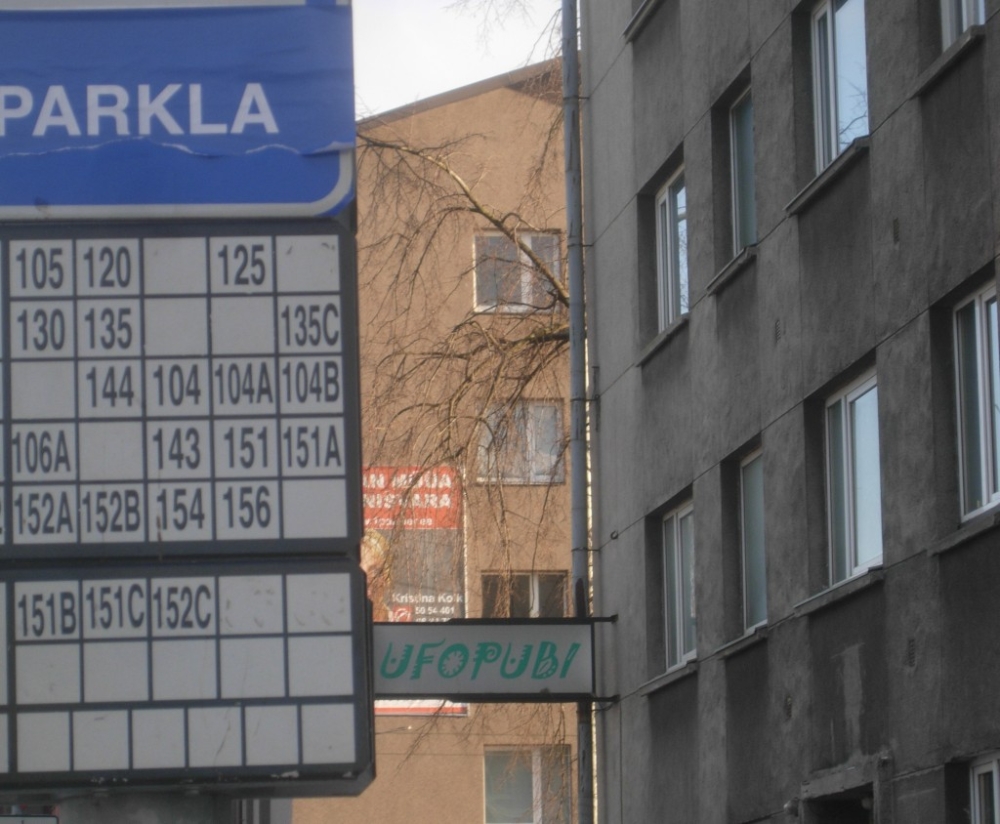
An act of drab bureaucracy become deeply personal in illegal form. Still in place a week later, Evi Pärn’s redesignation of Kunstiakadeemia bus stop, in keeping with a once creative-space’s newfound parking purposes. https://vimeo.com/58141095
If it sounds like the appeal of what Gapševičius introduces is purely conceptual, value in value defying, anarchy in the face of authority, what runs that boundary down are the surprisingly raw attitudinal responses to be found in the experience of much of the work. The most striking instance shown is the changing form of network communication data, aesthetic qualities emerging from a subversion of subversion, a simple choice, made in this context, to display the backend movements of bare code that underlie the deliberate output.
A change in narrative
Where Gapševičius’ P2P section tackles its illegality first, aesthetic second, Flynn and McGuffie’s redneck homage is up front about the viscera and the spectacle. The theoretical (i.e. physical) introduction, slideshow, youtube party demonstrates this clearly. As previous experiments, accidents and flashpoint dramas are proudly shown, not a person in the room asks why, it’s just ooh and aah, followed by the ‘how and when do we do it?’
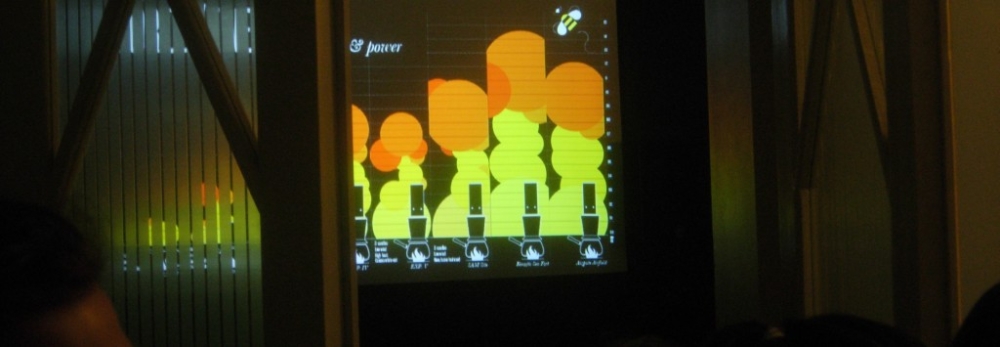
Lewis McGuffie’s graphic of previous explosion scale, details and bee extermination efficacy.
The group dive in with aplomb, favourite to blow up best is the Northern Irish built Russian nuke-tribute Tsar Bomba RT-2UTTKh Topol-M [William Kelly], warhead shaped, air-intake skirting, and an unnerving gleam in its constructor’s eyes convince us all. Others engage with no less verve: a 2-piper[Andrej Vasilenko, Alexandru Raevschi]; a bare bones stack [Ivan Rynn]; the last, milk churn (Flynn’s special contribution) chimney construct [Ida Britta Petrelius, Johanna Rannula, Emilia Rosenkrantz] bedecked in decoration for the theatrical touch.
The final countdown, largely and sadly, sputters and prejacs — some laws just don’t break. -20C air pressures don’t mix with backyard candle bombs. The Tsar is stamped into oblivion and disgust, with barely a belch, even this outperforms the others, until from out of nowhere, McGuffie’s face for fuel — the milkmaid blows her goldtop and we get our single shot at the heavens. Fittingly refined, a little restrained, its more than enough for our frozen feet and minds and more than enough for a second lesson of the night: Blowin’ up shit looks damned pretty.
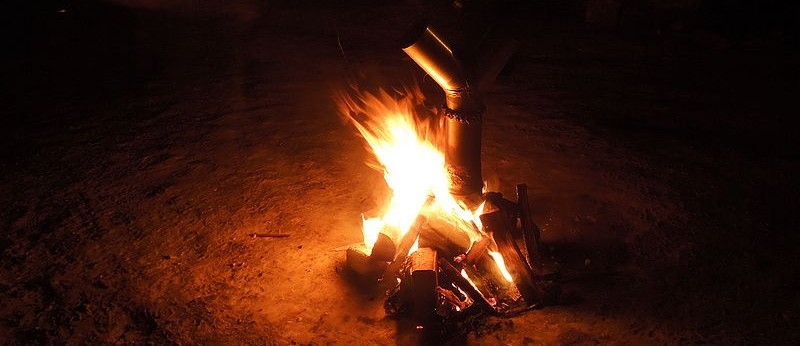
Fire, photograph by Hidemi Nishida
It sounds too simple, but discourse can be fluid, physical demonstration explosively expand on intellectual concept. Gee whizz awe, shock and wonder overpower hesitation to cross the law. Society’s formal structure fails to measure up to loud noise and fire. The emotional response, be it joy or fear, out argues the rationally justified. So it should be able. Vice-versa.
Illegal Aesthetics credit and participant list:
P2P workshop, Mindaugas Gapševičius (LT/DE)
Benign Explosions, Fiona Flynn (UK), Lewis McGuffie (UK/EE)
New Media and Critical Approach in art, Raivo Kelomees (EE)
Conversation leader, John Fail (US/FI/EE)
Sauna, Ernest Truely (US/EE)
Ptarmigan
Polymer
Ida Britta Petrelius (SE)
Emilia Rosenkrantz (DK)
Alexandru Raevschi (NO)
Hidemi Nishida (NO)
Veronika Viluma (LV)
Mikk Madisson (EE)
Andrej Vasilenko (LT)
Mari Keski-Korsu (FI)
Sara Milazzo (FI)
Antanas Stančius (LT)
Sandra Strele (LV)
Egor Kraft (AT/RU)
Evi Pärn (EE)
Johanna Rannula (EE)
Ivan Rynn (IE/EE)
William Kelly (IE/EE)
Sandra Kossorotova (EE)
For more information about the workshop see here.
























